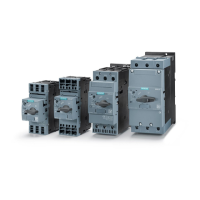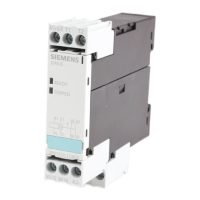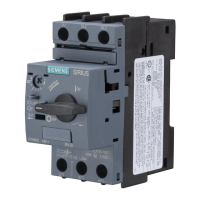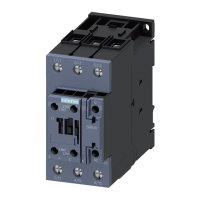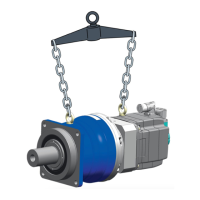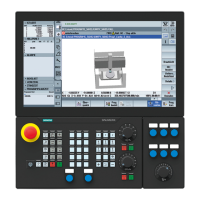SIRIUS 3RV2 motor starter protectors
4.5 Configuration
SIRIUS Innovations
System Manual, 01/2011, A8E56203870002-03
391
4.5 Configuration
4.5.1 Short-circuit protection
The short-circuit releases on 3RV2 motor starter protectors isolate the faulty load feeder
from the supply system (three phases) in the event of a short circuit, thereby preventing
further damage.
With a short-circuit breaking capacity of 55 kA or 100 kA in the case of a voltage of
400 V AC, the motor starter protectors count as short-circuit-proof as long as higher short-
circuit currents are not anticipated in their installation location.
Backup fuses are only necessary if the short-circuit current at the installation location
exceeds the motor starter protectors' short-circuit breaking capacity.
The short-circuit breaking capacity in the case of different voltages and the dimensioning of a
fuse (if it is required) are described in the chapter titled Short-circuit breaking capacity
(Page 462).
4.5.2 Motor protection
The tripping characteristic of 3RV20/3RV21 motor starter protectors is primarily designed for
protecting three-phase motors.
The rated current I
n
of the motor to be protected is set on the setting scale. The short-circuit
release is factory-set to a value that is 13 times the rated current of the motor starter
protector. This ensures problem-free ramping-up and safe protection for the motor.
The phase loss sensitivity of the motor starter protector ensures that it trips at the right time
in the event of phase loss and the resulting overcurrents in the other phases.
4.5.3 System protection
3RV20 and 3RV21 motor starter protectors are also suitable for protecting systems.
To prevent premature tripping caused by phase loss sensitivity, the load applied to each of
the three current paths must always be the same. With single-phase loads, the current paths
must be connected in series.
3RV27 und 3RV28 circuit breakers are also suitable for system protection; they also have
approval according to UL 489 or CSA C22.2 No.5-02.

